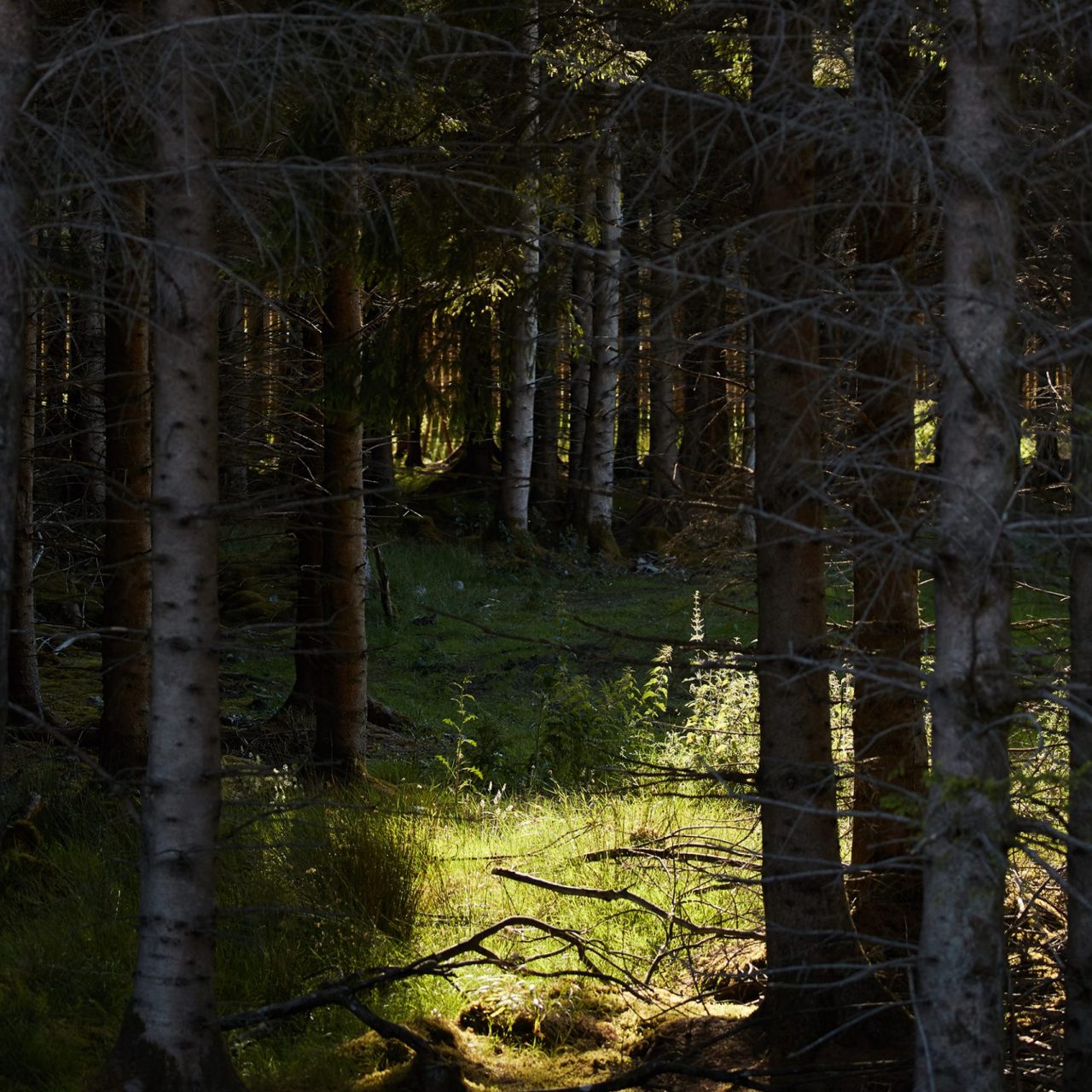From pine trees to pine martens – the wonderful wildlife of Longford Forest
- Body Content
-
We caught up with Colm Flynn, one of our Senior Rangers, to find out a little more about the flora and fauna living in our beautiful forest. Next time you’re out on a walk, why not use his handy tips to help identify some of these splendid species?
Trees
There’s around 400 acres of woodland surrounding Longford Forest, which makes it the perfect home for plenty of species of flora and fauna. The woodland is a mixed forest, meaning there is a variety of both broad leaf and coniferous trees. We have a great diversity of species, which is something that I find particularly interesting, and we’ve got some trees which are more than 100 years old, which really add to the sense of history in the forest.
One tree that you might come across on your trips to the local park is the silver birch. It’s a native Irish tree and can be commonly found across the country, although it’s a little less common than the downy birch. It can be identified by its white-hued bark and its light green leaves, which are small and triangular with a toothed edge. These will fade to yellow in autumn, so look out for that.
A rarer species we are lucky to have at Longford Forest is the lime tree. They have heart-shaped leaves with a serrated edge and, in the wintertime, their twigs are red and hairy and sprout a pink-coloured bud. However, don’t be fooled – they don’t actually grow limes, they just share a name! Because their wood doesn’t warp, the bark of the lime tree is used to make piano keys and Morris dancing sticks.
Another tree that is native to Ireland, but this time a coniferous tree, is the Scots pine. It has needle-like leaves which are blue-green in colour, slightly twisted and grow in pairs on short side shoots. Cones are grey-brown with a circular bump at the centre of each scale. Its evergreen leaves are present all year round, which is a great way to identify it in winter. Our red squirrel population love Scots pine, so we love them too.
The final species of tree to mention is the Douglas fir. It’s a spectacular tree that can grow extremely tall. In fact, Ireland’s largest tree is a Douglas fir. It’s a rare species of conifer with soft, flexible and flat needle-like leaves. One of the most interesting features of this tree is that its needles smell of pineapple when crushed in your hand. So if you think you spot one, try this out to check – just be sure to sanitise afterwards!
Mammals
We have many woodland animals at Longford Forest, and early indications show that habitats and wildlife populations are increasing and becoming more diverse. As I mentioned, we have a really strong population of red squirrels here at Longford Forest. They’re a protected species and can be spotted by their striking orange fur, which varies from ginger to darker brown. They’re rare across Ireland and, when the village first opened, sightings were rare here too. However, we now see them daily, which is a great indication that the population is both growing and thriving. Red squirrels eat pinecones and leave characteristic stripped cones under conifer trees, so that’s a great way to notice that they’re around. Their growing population gives me a great sense of achievement – everyone at Longford Forest loves them.
Another species that goes hand in hand with the squirrels is the pine marten. They indirectly protect our red squirrel population, who are too fast to be caught by the predators. Extremely rare and difficult to spot, pine martens have dark fur, with a cream chest, and run with a humped back. They’re nocturnal creatures, so sightings are mainly at night or early morning. The presence of these animals at Longford Forest is special as they’re so elusive. The team here is working hard to increase the population with special boxes that encourage breeding to strengthen their numbers.
The final animal is one which is super popular with our guests. It’s the fallow deer. Every time one of our guests sees one moving through the trees, they’re stunned by the sight of these beautiful animals. At Longford Forest, there are two colour variations, a light chestnut coat with white spots (a common variation) and a darker brown/black colour, so that’s what you need to look out for if you’d like to spot one.
In addition to the pine marten boxes, we also have ones for squirrels, hedgehogs, bats, owls, birds and butterflies. They’re all designed with different purposes and from different materials but aim to encourage breeding and provide refuge. We also have feeders to provide supplementary food for the deer, birds and squirrels during the winter months, although we reduce this during the summer to encourage the wildlife to forage naturally.
Birds
The forest and lake mean that Longford Forest attracts an incredible range of birds throughout the year. One of my favourites are the grey herons. They’re unmistakable and stand tall with long legs, a long beak and grey, black and white feathers. They’re often spotted beside water, but we currently have four that have been seen roosting in the trees behind Lodge 1 – something to remember when you book your next break!
On a much smaller scale, Longford Forest has various types of tit. These small birds are more common and easier to spot than the likes of herons, so look out for them in your garden or local park.
Blue tits have a colourful plumage of blue, yellow, white and green. They’re one of the most attractive birds and one of the easiest to recognise – look for a blue cap on their head, blue cheeks and a dark band across their eyes.
Great tits have a black head and neck, with prominent white cheeks, a yellow underpart and an olive sheen. Coal tits are less colourful than some of their relatives, but they have a distinctive grey back, black cap and a white patch on the back of their neck – if you’re close enough, you might see that they have a smaller, sleeker bill than the blue tit and great tit.
Finally, the long-tailed tit has (no surprise!) a long tail that is bigger than its body, and a pale pink belly as well.
Finally, on the other end of the spectrum, we have recorded sightings of many protected species at Longford Forest. Some highlights include the common raven, a sleek, blackbird with excellent acrobatic flying abilities. We have a family of four at Longford Forest, who can be heard making their typical croaking sound. Another is the crossbill. Again, a protected species – the male is a distinctive brick red colour and the females are a greenish-brown. They’re a chunky finch whose bills cross at the tips, which is where they get their name from. This distinctive feature allows the bird to extract seeds from conifer cones.
Whilst you’re unlikely to spot either of these species out and about, you just might in our beautiful forest. They provide a real sense of accomplishment to the team and listening to them sing and communicate reminds us how precious nature is and of the importance of our conservation work.
So, next time you’re at Longford Forest, keep an eye out, and don’t forget that if you need a hand identifying anything, come and find us – we’re happy to help!









